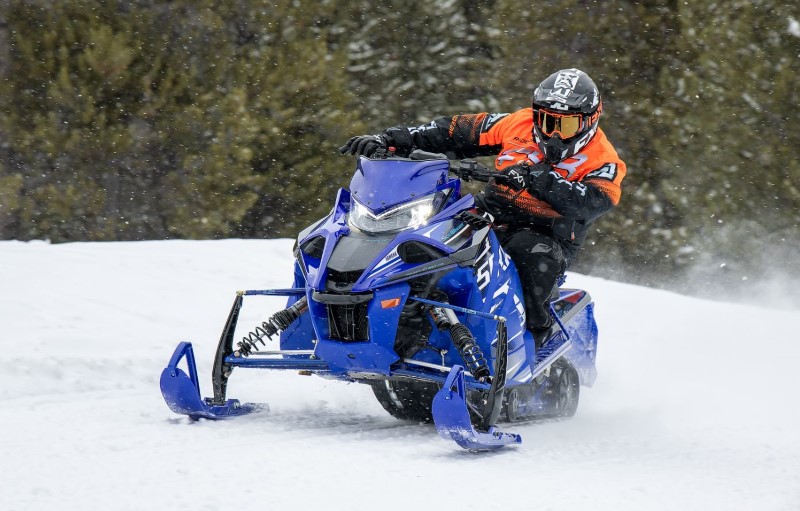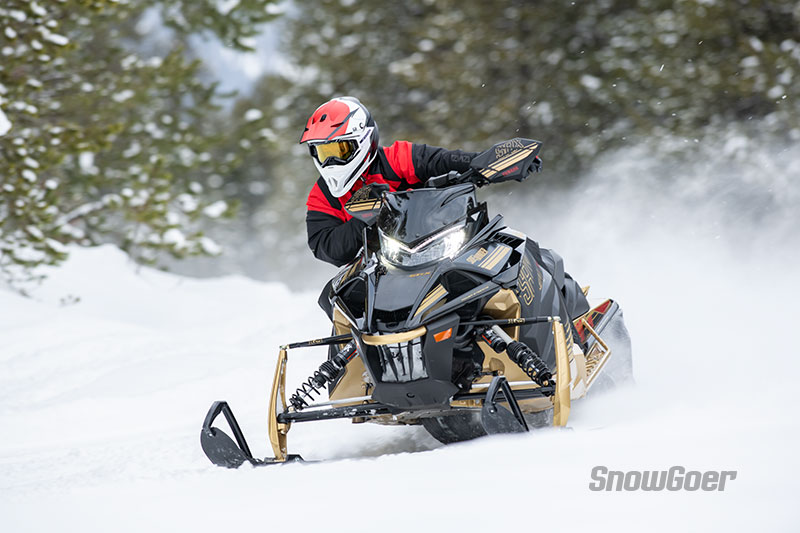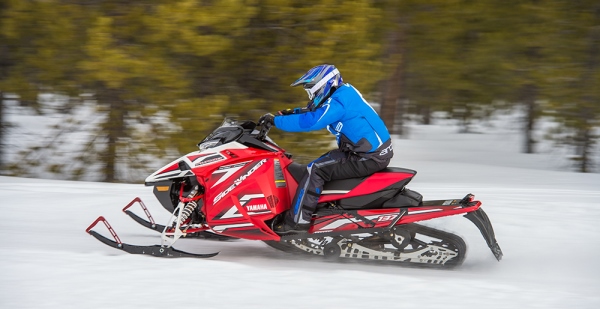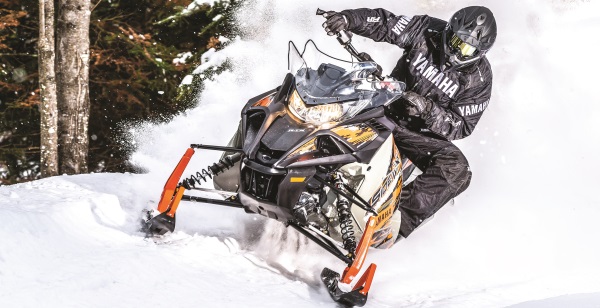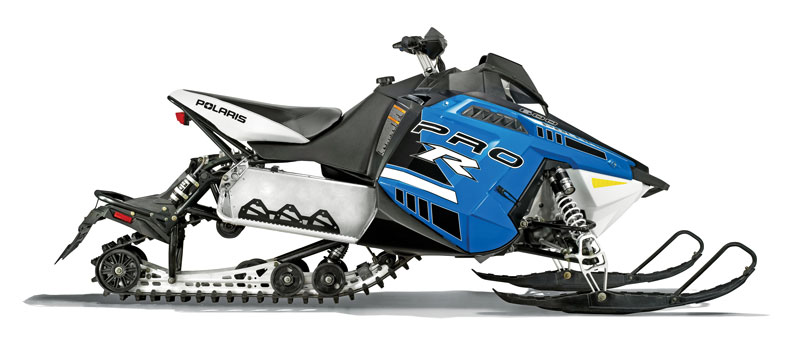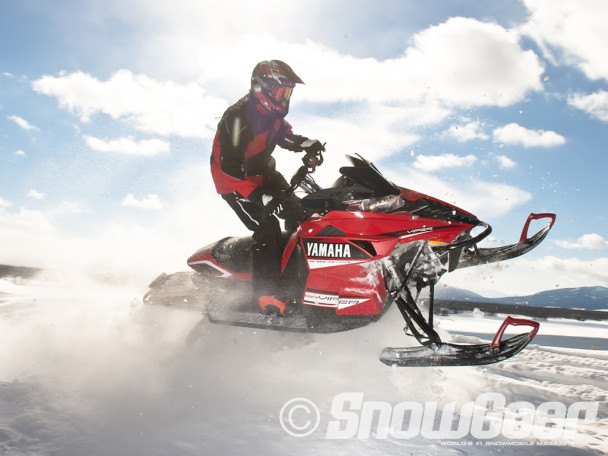Yamaha’s Apex clan comes in three versions. The engine package remains the same, while the suspensions differ.
The corporate descriptions of each version indicate the target rider of each machine. The RTX is positioned as “rough trail performance,” the GT as “groomed trail/rough trail crossover,” and the ER as “groomed trail performance.”
Styling reflects these different attitudes. The RTX has a shorter windshield with exposed, tall, hooked handlebars with handguards. The GT has a mid-sized windshield with the tall, hooked handlebars, as does the ER.
All Apex machines have a restyled snowflap for 2007. They come set in the Deltabox II chassis, which promotes a rider-forward position. The seats are tall, though they are most firm on the RTX model. The ER has blue-tinted headlights and yellow-tinted on the RTX. They also use a 15- by 121- by 1.25-inch Camoplast Rip Saw track.
Trunk space has expanded on the RTX model. Electric start is standard on all Apex models, but reverse is only standard on the GT and ER versions.
ER
Front Suspension: Independent Double Wishbone; Shocks/Travel: HPG Aluminum/9 inches; Rear Suspension: Mono Shock RA; Shock/Travel: KYB Remote Adjust/11.6 inches; Features: This setup uses a single shock in the rear suspension that’s adjusted by a dial near the driver’s left foot. The front shocks are rebuildable and rechargeable.
RTX
Front Suspension: Independent Double Wishbone; Shocks/Travel: Fox FLOAT/9 inches; Rear Suspension: Pro Active CK; Shocks/Travel: HPG (front), HPG with compression clicker (rear)/11.5 inches; Features: This is Yamaha’s high performance suspension setup, designed for deep ruts and moguls. The rear shock offers a 20-click range for compression adjustment. There’s a three-position anti-bottoming stopper on the rails.
Genesis 150FI
This is the second year for this Yamaha four-stroke powerhouse. It’s a 998cc, 150 hp fuel-injected engine. It’s had no major changes over last year.

